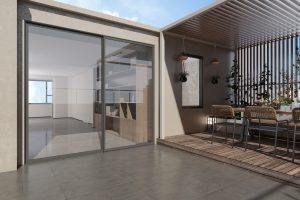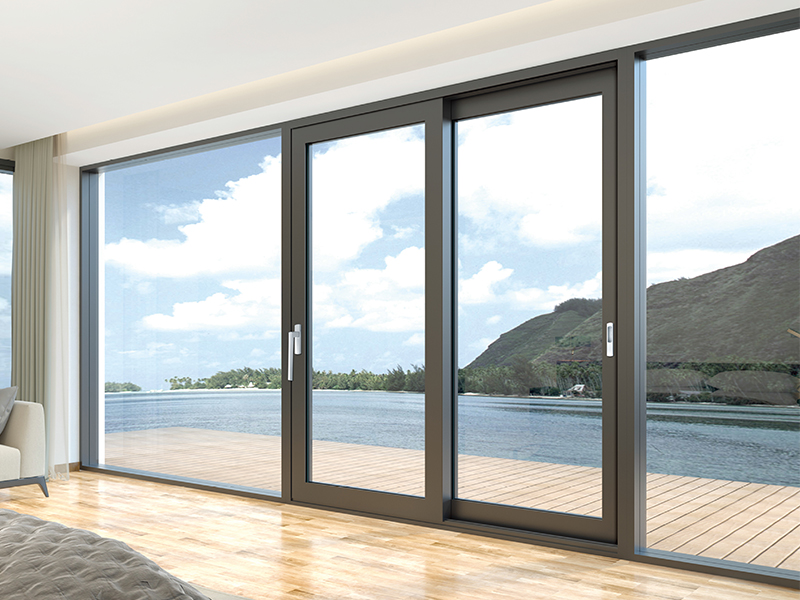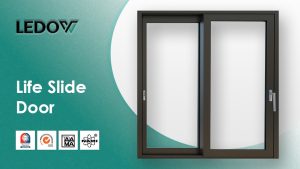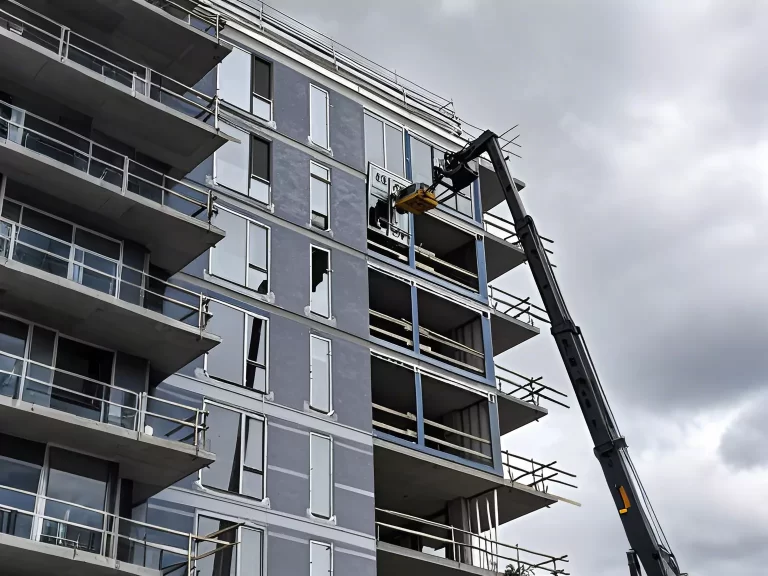Sliding doors are a prevalent feature in many American residences, offering an elegant means to introduce abundant natural light and facilitate expansive openings to the outdoors when conditions are favorable. Despite their established efficacy, a growing number of Chinese manufacturers have turned their attention to lift-and-slide doors, citing various design advantages and operational ease.
This article delves into the comparative attributes of lift-and-slide and traditional sliding doors, elucidating their fundamental distinctions to aid in making an informed choice for your architectural projects.
Traditional Sliding Doors
Conventional sliding doors operate using a stationary rail fixed to the bottom of the outer frame. The door itself is supported by small rollers positioned beneath the panel, which traverse along this bottom rail. To ensure adequate water and air tightness, traditional sliding doors maintain minimal clearance between the rail and the panel, resulting in significant friction and wear on the seals, even when the doors are brand new. Over time, as debris and corrosion exacerbate the reduction in clearance and the rollers’ bearings deteriorate, the doors can become increasingly difficult to maneuver, particularly in larger configurations. This degradation is a common issue observed in older sliding doors.
In contrast, lift-and-slide doors circumvent the drawbacks of traditional sliding doors through a mechanism that elevates the door before it slides. This design accommodates an extensive range of sliding configurations, from standard two-panel setups to expansive multi-panel or corner-less arrangements that can span an entire wall or building.
When the handle is turned downward, the door is lifted by a pulley system, disengaging it from its seals and creating ample clearance from the bottom rail. This allows the door to glide effortlessly with minimal effort. Returning the handle to its original position lowers the door, re-seating it onto the rail to ensure optimal air and water tightness. In the closed position, the rail is effectively shielded from debris and corrosion.
Lift-and-Slide vs. Traditional Sliding Doors: A Comparative Analysis
Ease of use
Lift-and-Slide Doors: These doors employ a sophisticated mechanism that allows the entire panel to be raised slightly off the track before sliding. Activated by a specialized handle, this lifting action facilitates smooth and effortless movement, creating expansive openings.
Traditional Sliding Doors: These doors rely on a horizontal sliding mechanism where the panels glide along a track. This straightforward motion is space-efficient and requires minimal effort, making traditional sliding doors suitable for areas with restricted clearance.
Water and air tightness
Lift-and-Slide Doors: Thanks to their lifting mechanism, lift-and-slide doors achieve a more secure seal when closed compared to traditional sliding doors. This enhanced sealing capability reduces air infiltration, improves thermal insulation, and minimizes external noise.
Traditional Sliding Doors: Although traditional sliding doors provide a satisfactory seal, they may not match the air tightness and insulation capabilities of lift-and-slide doors. Nonetheless, advancements in design and materials have improved their energy efficiency and weather resistance.
Aesthetic Options
Lift-and-Slide Doors: Available in various configurations, including single, double, and multi-panel designs, lift-and-slide doors offer considerable versatility in both aesthetics and functionality. They can be customized with diverse materials, finishes, and glazing options to complement various architectural styles.
Traditional Sliding Doors: These doors come in an array of styles and configurations to match different architectural preferences. They can be constructed from materials such as wood, aluminum, or glass, with options for frameless designs or decorative features.
Get an Thermal Break Aluminum Windows Quote For Your Home →
Space Requirements
Lift-and-Slide Doors: The lifting function of these doors allows for seamless operation without requiring additional clearance space. This makes them ideal for applications where swing doors or traditional sliding doors might be impractical.
Traditional Sliding Doors: Known for their space-saving design, sliding doors do not require swing space, making them suitable for rooms where maximizing floor space is crucial.
Forced entry resistance
Lift-and-Slide Doors: Typically incorporating advanced locking mechanisms and robust construction, lift-and-slide doors enhance security. The lifting action ensures a tighter seal when closed, offering increased resistance to forced entry. Many systems also feature integrated multi-point locking mechanisms for added security.
Traditional Sliding Doors: These doors include locking mechanisms and reinforced frames to deter unauthorized access. While they may not provide the same level of sealing as lift-and-slide doors, they can be equipped with secure locking systems, including keyed locks and auxiliary bolts.

Selecting the Optimal Option
The choice between lift-and-slide doors and traditional sliding doors hinges on various factors, including project requirements, aesthetic preferences, functionality, and budget constraints.
For projects with limited space where door movement is restricted, traditional sliding doors may be preferable due to their space-saving design. Conversely, lift-and-slide doors offer seamless operation without requiring additional clearance, making them suitable for larger openings where traditional doors might be impractical.
If energy efficiency, noise reduction, and weather resistance are paramount, lift-and-slide doors may be the superior choice due to their enhanced sealing properties. However, if these factors are less critical, traditional sliding doors can still provide satisfactory performance when equipped with appropriate glazing and sealing systems.
Assess the security features of each door option to determine if they meet your project’s security needs. Lift-and-slide doors often feature advanced locking systems and durable construction, enhancing security. Traditional sliding doors also offer secure locking options but may vary in protection levels based on design and hardware.
Consider the architectural style and design objectives of your project to select the door option that best aligns with your vision. Both lift-and-slide and traditional sliding doors offer a range of styles, materials, and finishes for customization.

Evaluate the ease of operation for everyday use. Lift-and-slide doors provide effortless operation and smooth gliding, which is beneficial for large, heavy panels. Traditional sliding doors also offer ease of use but may require slightly more effort to operate compared to lift-and-slide options.
Finally, consider your budget and the associated costs of each option. While lift-and-slide doors may offer advanced features and superior performance, they typically come with a higher price point compared to traditional sliding doors. Assess the cost-benefit ratio and prioritize features that are essential to your project within budgetary constraints.
Ready to Explore Lift-and-Slide Doors? Get in touch with us today for a consultation.










